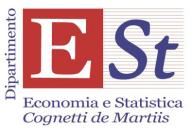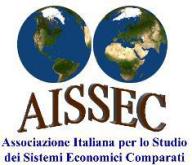Adriana García Vargas[1]
The COVID-19 pandemic has had a devastating impact on the global economy, and also caused a sharp decrease in trade. While agricultural trade declined in early 2020 as a result of the pandemic, its recovery has been faster than for other sectors, reflecting great resilience despite numerous disruptions to food value chains, and confirming the essential character of agriculture. Even though the world managed to avert the threat of a food crisis in 2020, the economic recession and the resulting loss of income threaten the access to food for millions, and the fact that world food prices are increasing strongly as of May 2021 is worrying. Many governments have responded to the pandemic with policy measures such as food export restrictions and support to the agricultural sector. Some of these measures, particularly when applied by large players, can have a significant impact on global food markets. The upcoming Twelfth WTO Ministerial Conference is an opportunity to agree on steps to strengthen the multilateral rules on agricultural trade, which can help enhance its contribution to the global recovery and to food security
More than a year after its outbreak, the COVID-19 pandemic is still far from over – in fact, many countries around the world (for example in Latin America) continue to struggle with dramatic increases in cases and deaths. While the uncertainty around when the pandemic will run its course –aggravated by the unequal access to vaccines– makes predictions difficult, the available data can help us better understand its impact on production and trade for different sectors and regions. The research available also provides a good picture of the types of measures that governments around the world have used or are using to respond to the emergency situation and mitigate economic effects.
The pandemic has clearly had a serious impact on the global economy: it is estimated that world production declined by 3.3% in 2020 (IMF, 2021), with strong differences among regions. The world is also experiencing a setback in the progress towards achieving the Sustainable Development Goals, with dramatic increases in global poverty (UNDP, 2021) and unemployment (UN, 2021).
COVID-19 also provoked a sharp decrease in trade in the first half of 2020. However, the worst-case scenarios initially predicted failed to materialize; in fact, world trade recovered surprisingly quickly (WTO, 2021a). Trade in agricultural goods proved to be particularly resilient: while it did contract in the second quarter of 2020, by the third quarter it was already showing positive growth, in contrast to other sectors.
The fact that food continued to be traded reflects the essential character of agriculture, particularly in light of the strict restrictions and the numerous bottlenecks experienced along the food value chain. For example, movement restrictions and partial border closures disrupted the flow of agricultural inputs and outputs and agriculture‑related services, reduced the access of temporary workers, and affected the harvest of several crops, while the disruption of air freight (between January and April 2020, worldwide flights decreased by 70%) created challenges for the trade of perishable foods (FAO, 2020a). In addition, the application of stricter protocols at harbors was estimated to increase from one to three days the time needed for cargo unloading (FAO, 2020b).
In 2020, the global supply of food remained sufficient, and prices did not show such strong increases as observed in 2007-2008, so that the threat of a new global food crisis was initially averted. However, many developing countries are suffering from impacts on the demand side: the economic recession and the resulting loss of income threaten the access to food for millions. Earlier this year, the interagency report The State of Food Security and Nutrition in the World (FAO et al., 2020) suggested that the pandemic may have added between 83 and 132 million undernourished people in 2020, while the USAID’s Famine Early Warning Systems Network (FEWS NET, 2020) revised its estimations of the peak population in need of emergency food assistance from 90 to 113 million.
What is more, world food prices are currently on the rise: in May, the FAO Food Price Index (FAO, 2021a) experienced a sharp increase, and the most recent edition of the AMIS market monitor (AMIS, 2021) alerts that the supplies of basic food crops could still be vulnerable in 2021-2022. It is thus clear that the world has not yet overcome the possibility of supply-side constraints on food availability.
Many governments responded to the pandemic by applying trade and other agricultural policy measures. In August 2020, the WTO (2020a) made an initial examination and grouped these responses in two broad categories:
- Phase 1 - Crisis management measures: applied in the early stages to contain the impact. They included sanitary and phytosanitary measures (initially to restrict or regulate imports of animal products, but later aimed at easing requirements to facilitate trade), tariff measures (such as temporary duty reductions and exemptions for some food products), and export restrictions or prohibitions. Some governments also started building stocks of food or expanded existing programs.
- Phase 2 - Measures to mend supply chains and help agricultural producers: including general economic stimulus packages and specific support to the agricultural sector, such as domestic food aid, loss compensation, and facilitated access to credit, among others. Some countries also applied measures to support exporters (such as compensation for higher airfreight costs), and in a few cases, some import restrictions.
Luckily, most of the export restrictions applied were temporary, and the major food exporters heeded the calls for restraint and the political commitments made in international fora such as the G-20, as these measures can have very negative effects: the export restrictions that countries implemented in response to rising food prices in the past decade caused a spillover effect that further aggravated the problem, with enormous economic and social consequences. Anderson and Martin (2011) found that these restrictions explained respectively 45% and 30% of the increases in world rice and wheat prices. The existence of a "multiplier effect" was also confirmed: the imposition of restrictions in response to a shock in the world market aggravates the initial effect and causes other countries to respond in the same way (Giordani, Rocha and Ruta, 2016). An analysis of restrictions implemented in 2007-2008 and 2010-2011 found that even temporary measures can have long-lasting effects (Deuss, 2017).
As of June 2021, no active export restrictions on food products are reported (Laborde, 2021), even though numerous other trade measures affecting agricultural goods are still active (ITC, 2021) and are the subject of multilateral discussion (WTO, 2021b).
Other measures applied by governments to respond to the pandemic aimed at facilitating the flow of agricultural trade, by relaxing technical requirements (WTO, 2020) or simplifying import procedures. For example, several countries started accepting electronic phytosanitary or veterinary certificates in lieu of paper copies. While many of these measures were temporary, the FAO (2021b) notes that some countries did make permanent advances in the digitalization of import procedures. It seems that the emergency situation forced authorities to “think outside the box” and drove advances that may have been considered impossible until then. An increased adoption of new tools and technologies to facilitate trade could end up being a positive effect of the crisis. It would certainly be very positive if some of the trade-facilitating measures applied are made permanent.
A number of countries also responded to COVID-19 with important amounts of support to the agricultural sector (Gruère and Brooks, 2020). While it is vital to protect the livelihoods of farmers and ensure that they continue to produce food, we must avoid an increase in policies that distort global markets or harm the environment, particularly when applied by large players. According to the OECD (2020), a large share of the support policies that countries currently use are of the most trade-distorting type, and also exacerbate the environmental impact of agriculture.
After a long postponement due to the pandemic, the WTO (2021c) will finally hold its Twelfth Ministerial Conference in December [2021]. This will be a valuable opportunity to agree on concrete ways to strengthen the multilateral rules on agricultural trade, and to enhance its contribution to the global recovery and to food security. Two very welcome developments would be an agreement to cut trade-distorting support, which would make resources available for more efficient investments in the global food system, and clearer and stronger disciplines on food export restrictions, as these measures can threaten global food security in a crisis scenario. At the minimum, WTO members should agree to exempt humanitarian food purchases by the World Food Programme from export restrictive measures. One can only hope that this conference will not be another missed opportunity for agricultural trade reform.
References
Agricultural Market Information System - AMIS (2021). Market Monitor No. 89 – June 2021,
FEWS NET (2020). COVID-19 Pandemic Impacts on Food Security,
Laborde, D. (2021). Export Restrictions Tracker,
IMF (2021). World Economic Outlook: Managing Divergent Recoveries. Washington, DC, April,
OECD (2020). COVID-19 and Global Food Systems. Series Tackling coronavirus (COVID‑19), June,
UN (2021). COVID crisis to push global unemployment over 200 million mark in 2022,
WTO (2020a). COVID-19 and Agriculture: a story of resilience. Information note, August,
WTO (2021b). COVID-19 concerns continue to overshadow WTO farm trade discussions, News item,
WTO (2021c). Twelfth WTO Ministerial Conference, Ministerial Conferences,
[1] Economist (HTW Berlin/Universidad de Costa Rica) and independent consultant specializing in international trade policy and negotiations. Former trade negotiator for the government of Costa Rica.









